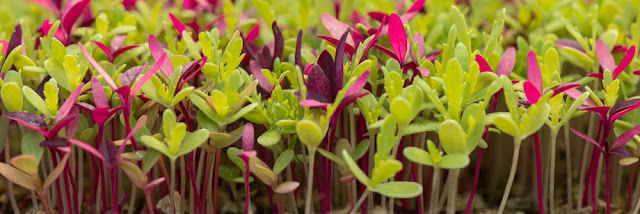Healthy Heritage Foods of India: Reviving Wellness from the Past
By Dr. Anindita Roy (Ph.D) Wellness Counsellor, Heritage Wanderer , Educator
India’s culinary landscape is a reflection of its diverse geography, culture, and ancient wisdom. At the heart of this diversity lies a treasure trove of heritage foods that are not only delicious but deeply rooted in health and healing traditions. Long before the advent of modern nutrition science, Indian kitchens operated as apothecaries—offering meals that could heal, strengthen, detoxify, and energize the body.
As contemporary wellness trends lean toward organic, fermented, and whole foods, it is the perfect time to revisit the traditional health foods of India that have nourished generations.
________________________________________
1. Fermented Wisdom: Probiotic-Rich Staples
Fermented foods have been central to Indian diets, especially in tropical climates where fermentation naturally occurs and enhances the digestibility and nutrition of food.
• Idli, Dosa, Appam (South India): Made from fermented rice and urad dal, these dishes are light, easily digestible, and loaded with probiotics.
• Kanji (North India): A tangy drink made by fermenting black carrots with mustard seeds—great for gut health and immunity.
• Pakhala Bhata (Odisha): Fermented rice soaked overnight in water, often consumed with mustard oil and green chilies—cooling and beneficial for the digestive system.
________________________________________
2. Millet Magic: Ancient Grains for Modern Health
Before rice and wheat became dominant, India’s staple grains were millets—rich in fiber, protein, and essential minerals.
• Ragi (Finger Millet): High in calcium, beneficial for bone health; commonly used in Karnataka and Tamil Nadu.
• Bajra (Pearl Millet): Consumed in Rajasthan and Gujarat, ideal for winter, and known for its warming qualities.
• Jowar (Sorghum): Popular in Maharashtra, good for diabetics due to its low glycemic index.
________________________________________
3. The Healing Cup: Decoctions and Heritage Drinks
Traditional Indian beverages weren’t just about taste—they served specific therapeutic functions.
• Kadha: A herbal infusion of tulsi, ginger, cinnamon, and black pepper used to fight colds and improve immunity.
• Buttermilk (Chaas/Mattha): Cooling, probiotic-rich, and perfect for aiding digestion in the summer.
• Golden Milk (Haldi Doodh): Turmeric-infused milk, widely known now for its anti-inflammatory properties.
________________________________________
4. Fat is Not the Enemy: Good Oils and Desi Ghee
Traditional Indian cooking fats are now being recognized globally for their health benefits.
• Cold-pressed mustard, coconut, and sesame oils retain antioxidants and natural nutrients.
• Desi Ghee, rich in fat-soluble vitamins and butyric acid, is praised in Ayurveda for its role in enhancing digestion and cognitive function.
________________________________________
5. Forgotten Superfoods: Seeds and Ancient Grains
• Sattu (Bihar, Jharkhand): Roasted gram flour used in drinks and parathas, loaded with protein and cooling in nature.
• Amaranth (Rajgira): Gluten-free, rich in calcium and iron—ideal for fasting days and energy boosts.
• Flaxseeds (Alsi): High in omega-3 fatty acids, they were used in chutneys and laddoos.
________________________________________
6. Porridges and Power Meals
• Raab (Gujarat/Rajasthan): A thick soup made from bajra flour, ginger, and jaggery; immunity-boosting and perfect for winters.
• Koozh (Tamil Nadu): Fermented millet porridge consumed during hot months, rich in probiotics.
• Kanji (Kerala/Tamil Nadu): Rice gruel often made with medicinal herbs; ideal for recovery and convalescence.
________________________________________
7. Medicinal Pickles and Chutneys
• Amla (Indian Gooseberry) Pickle: A vitamin C powerhouse that aids digestion and boosts immunity.
• Ginger, Garlic, Curry Leaf Chutneys: Traditionally eaten with every meal for their antimicrobial and digestive properties.
________________________________________
8. Sacred and Seasonal Foods: Wellness in Rituals
India’s festivals offer a calendar of seasonal health foods that align with climatic changes and nutritional needs.
• Til (Sesame) Preparations for Makar Sankranti: Warm, nourishing, and packed with calcium.
• Panjiri (Punjab): A winter mix of wheat, ghee, dry fruits—an age-old energy booster.
• Neer Mor & Panakam (Tamil Nadu): Cooling beverages served during summer festivals to prevent heatstroke.
________________________________________
Towards a Holistic Food Future
As the world wakes up to the significance of sustainable, local, and functional nutrition, India’s health heritage foods offer time-tested solutions. They represent not just nourishment, but a harmonious relationship with nature, seasons, and the human body.
In reviving these foods, we reclaim more than recipes—we restore a way of life that honored balance, biodiversity, and well-being.
 Reviewed by CREATIVE WRITER
on
April 07, 2025
Rating:
Reviewed by CREATIVE WRITER
on
April 07, 2025
Rating:






.JPG)





Homemade cooking always feels special because it combines creativity with care. I like preparing stews and soups for cozy evenings, while cookies are a favorite dessert for everyone in the family. The freshness of ingredients makes such a big difference in taste. More than the flavors, it’s the emotions attached to cooking that make it meaningful. Sharing food prepared at home creates bonds, laughter, and happiness at the dining table. Homemade recipes don’t just satisfy hunger, they nourish relationships too. Truly, food made with love at home carries joy that can’t be found anywhere else. It’s comfort in every bite. flan de huevo casero receta dela abuela
ReplyDelete